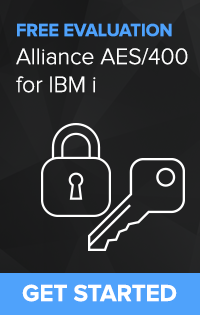Understanding the basics can help you avoid problems!
As enterprise customers deploy data security solutions to meet various compliance regulations (PCI DSS, HIPAA, etc.), they are frequently surprised by the performance impacts of encryption. Inadequate preparation in an encryption project can lead to increased costs, delayed (or even failed) projects, inability to meet compliance requirements, and even exposure in the event of a data breach.

By its very nature, encryption and decryption are resource intensive processes. Enterprise customers can be surprised to discover that encryption from one vendor can perform very differently than the very same encryption from another vendor. While the various vendor solutions accomplish the same tasks, they vary greatly in how efficiently they do these tasks. The differences can vary by a factor of 100 or greater! This can have a large impact on business applications that perform encryption and decryption tasks. One vendor’s solution may encrypt a data in 10 minutes, and another vendor’s solution may take 10 hours to perform the same task!
Avoid surprises, ask for performance metrics:
Armed with the knowledge that encryption performance is important, you can take action to avoid potential problems. Before acquiring an encryption solution, ask your data security vendor to provide performance metrics for their solution. How long does it take to encrypt one million credit card numbers? Can they provide you with source code and demonstrate this performance on your server? Optimizing software for performance is a complex task and usually involves specialized technical talent and some experimentation with different computational techniques. Unless an encryption vendor is deeply committed and invested in encryption technologies, they may not make performance enhancements to their applications.
Create your own proof-of-concept applications that measure encryption and decryption performance in your application environment. Be sure to measure how well the encryption solution performs under your current transaction loads, as well as anticipated future transaction loads. A good rule of thumb is to be sure you can handle three times your current encryption volume. This will position you for increased loads due to unexpected changes in the market, or an acquisition of another company. It also insures that you are seeing real-life performance metrics, and not just the vendor’s marketing message.
Avoid hidden costs, ask for pricing calculations:
Ask your purchasing and accounting departments to include performance upgrade costs in the pricing calculation during vendor evaluation. Be sure these costs include any increases in software license fees. If an encryption solution consumes one third of the CPU processing power of a server, you might want to include the cost of upgrading to a processor twice as powerful as the one you have. Working these costs in during the product evaluation phase can provide a more realistic view of the actual cost of a vendor encryption solution. Upgrading hardware can lead to unexpected additional software costs. Some software vendors license their solutions to the number of processors, or speed of the processors, in your server. Upgrading hardware to solve a performance problem can result in increased software license fees.
Avoid red flags, not all AES encryption solutions are the same:
Some encryption solutions use “shadow files” (files external to your application) to store encrypted data. The use of shadow files normally indicates that the vendor has an incomplete implementation of the AES encryption suite, or that the system architecture is limited in some way. The use of shadow files can impose severe performance penalties. In order to perform an encryption or decryption task an addition file read or write is required which essentially doubles the file activity. This may also increase processor loads as your application mirrors the data to a hot backup system. You will want to be very careful in measuring the performance impacts of encryption solutions that use shadow files.
If an encryption vendor will not provide you with a fully functional evaluation of their solution, this represents a clear warning signal. Your application environment is unique and you will need to be able to evaluate the impact of encryption in your environment with a limited test. A vendor who refuses to provide you with a clear method of evaluating the performance of their solution may not have your best interests in mind.
Avoid frustrations, take a test drive with us:
Despite an organization’s best efforts, data will get out. The best way to secure sensitive information is with strong encryption that is NIST compliant and FIPS 140-2 compliant key management that meets or exceeds the standards in PCI, HIPAA/HITECH, and state privacy laws. For a more technical look at AES encryption, including FieldProc exit points and POWER8 on-board encryption, check out this blog by Patrick Townsend, Founder and CEO of Townsend Security: How Does IBM i FieldProc Encryption Affect Performance?
Our proven AES encryption solution encrypts data 115x times faster than the competition. But don’t just take our word for it, we provide a fully functional evaluation! Request a free 30-day trial (full version) of our popular Alliance AES Encryption and see for yourself.

